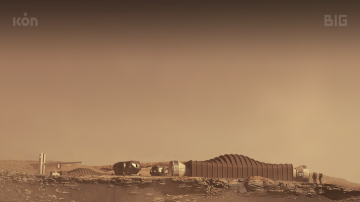The US space agency, NASA is seeking applicants for participation as a crew member for a year-long analog mission in habitat to simulate life on a distant world. The simulated mission is set to begin in Fall 2022, according to NASA.
In preparation for the real-life challenges of future missions to Mars, NASA will study how highly motivated individuals respond under the rigour of a long-duration, ground-based simulation.
In a tweet, NASA said, "Calling all Martians! @NASA is recruiting four crew members for a year-long mission that will simulate life on a distant world, living in “Mars Dune Alpha,” a 3D-printed habitat. Want to take part in research for the first human Mars mission?"
"The analog is critical for testing solutions to meet the complex needs of living on the Martian surface," said Grace Douglas, lead scientist for NASA's Advanced Food Technology research effort.
"Simulations on Earth will help us understand and counter the physical and mental challenges astronauts will face before they go," he said in a statement on Friday.
Each mission will consist of four crew members living and working in a 1,700-square-foot module 3D-printed by ICON, called Mars Dune Alpha.
The habitat will simulate the challenges of a mission on Mars, including resource limitations, equipment failure, communication delays, and other environmental stressors.
Crew tasks may include simulated spacewalks, scientific research, use of virtual reality and robotic controls, and exchanging communications. The results will provide important scientific data to validate systems and develop solutions.
The series of missions - known as Crew Health and Performance Exploration Analog - includes three one-year Mars surface simulations based at NASA's Johnson Space Center.
The analogs will support research to develop methods and technologies to prevent and resolve potential problems on future human spaceflight missions to the Moon and Mars.
"A master's degree in a STEM field such as engineering, mathematics, or biological, physical or computer science from an accredited institution with at least two years of professional STEM experience or a minimum of one thousand hours piloting an aircraft is required," said NASA.
(With IANS Inputs)
ALSO READ | NASA's X-ray solar imager to probe Sun's Corona
ALSO READ | NASA's Mars rover fails in first attempt to collect rock samples
